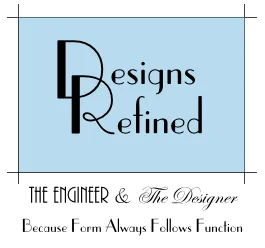The design craze brought on by ever-present TV shows sparks some reality checks in my everyday business. It is all well and good to see a room come together in under thirty minutes, given commercial breaks, but quite another when living through any type home redesign. I do believe that most people are sophisticated enough to realize this difference, but somewhere in the back of many minds is the hope that a redesign can actually happen as seen on TV.
A dash of reality must come into play at some point with any design. I try to remind clients that the project should be considered a journey, with changes along the way. When clients select a designer to help pull together, their home or a room--even in a small way--sometimes they must adapt to new circumstances. As a designer it is my job to listen and help point out all sides of a design choice; what is good for someone else is not necessarily a good choice for the client, even though he or she might love the look.
I find TV shows and magazines are great jumping off places for clients, allowing me to see in what direction they are leaning, and to what colors or styles they are drawn.
There are good choices and better choices; I like to give my clients the options as I see them and know that ultimately, the choice belongs to the client. For instance, hallways often lend themselves to artwork. Hallways usually are just long pedestrian pathways with little interest; so why not add some color or artwork. With proper lighting, a hallway can become a small gallery. Unfortunately, not all hallways are created equal; some are small with plenty of doors to break up the space; and others are so wide they seem like another room.
A narrow hallway can be tricky. It may not be wide enough to enjoy art work, or there may be utilities such as a thermostat stuck on the wall, leaving little agreeable space for artwork. Recently, I had to deal with a hallway in which the client had placed a series of small, framed pictures; they were interestingly spaced, but people could not appreciate them unless they had their back against the opposing wall. The pictures were not really noticed unless people came out of the hall bath, which hardly did the pictures credit.
My solution to this problem was to make a tight group of the six pictures at the end of the hall. The wall is actually the end of the guest room closet, when the door is open; it is what you see at the end of the hall, as you pass by or enter. The color on the wall is interesting and draws the eye toward it and now the picture grouping is an additional draw.
It would be a mistake to not take advantage of lesser walls; they too can be focal points, as in this case, an example of living with a design choice and then changing it after some consideration.
In many situations, where living with an arrangement for a short time is preferable to making expensive purchases without knowing if the set up is conducive to one’s lifestyle. The client and I also visited some earlier choices for room uses and discovered that in reality, the client will be more likely to use a given room in a way other than originally planned. The experience of living in a home is a good thing that helps sort out what is important.


